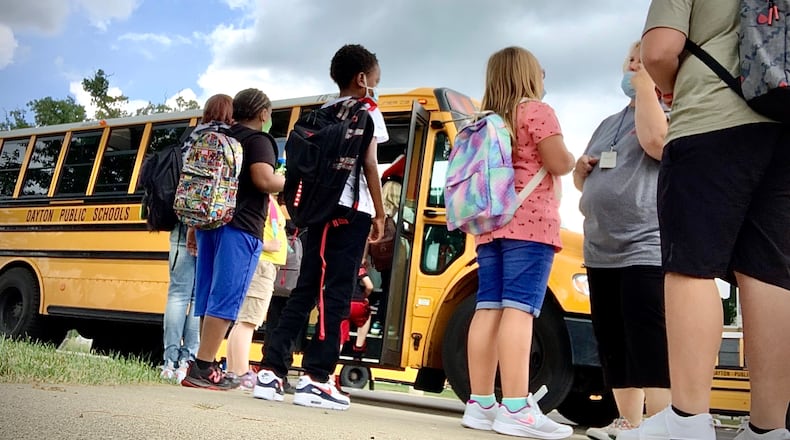The district also improved its districtwide Ohio State Test scores from about 17% proficient in spring 2021 to 33% proficient in spring 2022, according to preliminary results shared by DPS. Superintendent Elizabeth Lolli said the district still has a long way to go, but called it a significant gain in test scores.
“Now we’re back to where we were in 2019, which we worked hard to get to,” Lolli said. “And now we just need to take that momentum that we have and continue to push forward to recover those individuals that still need some intervention.”
Lolli cited the work of the district’s teachers, in-person learning, additional math instructors in some grades and the new two-teacher system in first, second and third grades as key to the recovery.
In the two-teacher model, one teacher takes half the class to work on math, while the other teacher works with the other half of the class on reading or writing. The smaller classes allow the teacher to better recognize when a student is behind, Lolli said, and the teachers can give more individual attention to students who need help.
The two-teacher model, funded largely through federal COVID relief money, will continue next year in those same grades, Lolli said. She said the district hopes the students who saw significant gains in test scores, who will now be third and fourth graders, will continue to make learning gains.
“For the most part, it’s worked out extremely well, as you can see from the results,” Lolli said.
According to an April 2022 study done by Ohio State University political science professor Vladimir Kogan, who has been working on the pandemic learning loss problem, on average, Ohio third graders are still behind pre-pandemic levels.
Kogan’s analysis showed that students have improved from the low point of fall 2020, but Ohio third graders overall in fall 2021 were still a month to one and a half months behind where they should be. Black students are more behind than other students, Kogan said, and students in urban districts are more behind than students in other types of settings.
Lolli said the idea for the two-teacher model came from her own experience using a teacher and an additional instructor together in primary school classrooms in other districts to teach phonics.
The model has worked well enough that Lolli has shared it with the interim state superintendent, Stephanie Siddens, as well as superintendents from other districts across Ohio, Indiana and Kentucky.
“But I think that we have set ourselves apart as far as the extent of the growth that we’ve seen and the recovery that we’ve seen,” Lolli said.
Credit: JIM NOELKER
Credit: JIM NOELKER
About the Author



